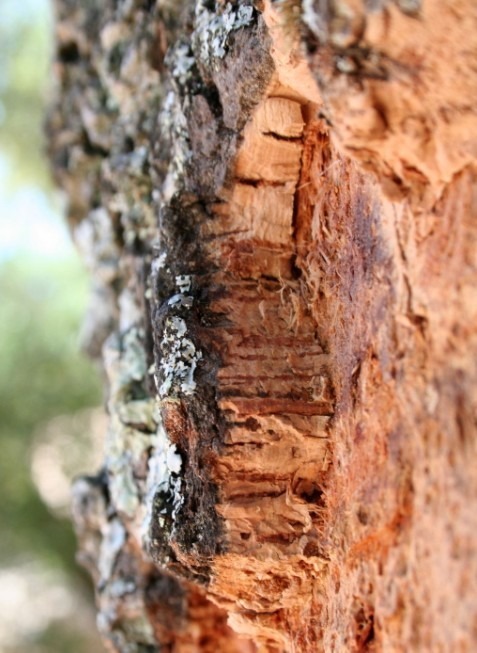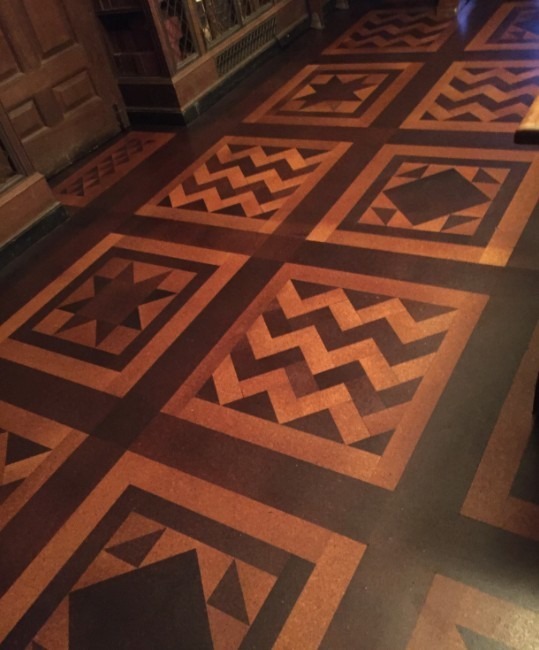Cork is commonly known as a stopper for bottles to seal and preserve the quality of the wine. Alternatively, it’s also used as fishing floats, musical instruments, balls, and bulletin boards. Yet, not many are aware that it’s highly versatile and functions as floor tiles, too.
Surprisingly, cork isn’t a new concept, either. It has been around for many decades, first used at the end of the 19th century, and has been traditionally used in churches and libraries. In recent years, cork flooring has started to gain popularity everywhere.
In this post, let’s discover more about cork flooring, its origin, cost, benefits, and how it can be an excellent flooring alternative for your home.
Also, Acoustic flooring minimizes sound transmission and impact noise in residential and commercial spaces. This specialized flooring solution provides comfort, noise reduction, and a conducive environment for work or relaxation.
What is cork flooring?
Cork flooring is a sustainable flooring alternative produced from the bark of the cork oak tree (Quercus suber). Living trees are planted in plantations for commercials and are periodically harvested for commercial use.
The process is strictly regulated, and the first harvest may only be done on trees aged at least 25 years old. Skilled workers do it by hand to ensure the rest of the tree remains unaffected. Cork oak’s bark regrows and will be harvested only once every nine years, making cork a natural, eco-friendly, and replenishable material.
After harvest, raw material is ground up, compressed, processed into sheets bonded with resins to create the cork flooring. They come in a wide range of shapes, colors, and finishes, colors to suit any preferences or style.
How much does cork flooring cost?
Each cork flooring plank may cost between $2 to $12 per foot, depending on its quality, thickness, and finish. What’s great is that the amount is similar to what you will spend on other types of flooring like carpet or bamboo, but compared to hardwood flooring, you’ll end up saving a few bucks. Though laminate and vinyl floorings may cost less, they may not have the same benefits cork flooring offers.
On average, a 100-square foot room will cost $950 in total, including the professional installation cost of $1 to $2 per foot, which is already pretty economical. Yet if you want to save more, don’t fret. Cork flooring can be a DIY project and is relatively easier to install than the tricky hardwood or bamboo floors. Thus, enabling you to cut on professional installation fees.
What are the benefits of cork flooring?
Cork may not rank high up on many people’s flooring wish list, but aside from being eco-friendly and cost-effective, it offers many other benefits than other flooring options. So, if you’re designing a new home or planning a renovation, here are the top advantages of choosing cork flooring:
It’s unique
Visit your colleagues’ and relatives’ homes, and you’ll see their floors covered with carpet, tile, or hardwood. Have you ever seen one using cork flooring? Chances are you haven’t encountered one yet. It’s little wonder, as it is not the popular option for many homeowners. If you’re someone who loves to deviate from the norm, cork flooring is your best bet. It’s unique and will ensure that your home stands out from the rest.
It absorbs noise
Are you living in an urban setting with high noise pollution? You can lessen the stress from the loud noises by installing cork flooring. Cork is a natural sound absorber as it contains millions of air-filled chambers, making it a good insulator. It inhibits the noise traveling inside a room and serves as a buffer, preventing noise from reaching the rooms underneath.
It is durable
With proper care, cork flooring is highly durable. With the same microscopic air pockets numbering millions, it can withstand heavy foot traffic. It’s ideal if you have a busy family, as it’s naturally bouncy and will recover slightly from minor accidents or impact dents. Small damages will also quickly blend in the floor’s design, making them unnoticeable, unlike in hardwood flooring.
It’s comfortable to walk or stand on
Walking or standing on hard floors for extended periods produces energy, which transfers upwards to our tendons and muscles. Thus, causing vibrations that hurt the feet, legs, and upper and lower backs. That’s not the case for cork flooring is it feels soft and flexible under your feet. It’s perfect for areas around your house where you walk or stand a lot, like your bedroom, kitchen, or home office with a standing desk.
It feels good year-round
Unlike ceramic tile, hardwood, and other stiff flooring materials that can get cold, cork stays warm in the winter. That way, you no longer need to wear socks around your house 24/7 or purchase rugs or carpets for the added warmth. Meanwhile, cork flooring remains cool underfoot in the summer and helps maintain an optimal temperature.
It contains suberin
Cork has suberin, a natural, impermeable waxy substance that provides cork with many added benefits. Thanks to suberin, cork flooring is naturally water-resistant, which means you can wipe away spills immediately. The same substance also helps protect the cork from fire and prevents it from burning relatively easier than other types of wood. Lastly, suberin also works excellent against insect infestations, further ensuring the longevity of the material.
It’s versatile
Another advantage of cork flooring is that it can be installed on various subfloors, from wood to tiles and cement slabs. Many homeowners often save money by avoiding the professional cost needed for uninstalling old hardwood and tile flooring. As long as the surface is flat and dry, cork flooring can be installed.
It’s aesthetically pleasing
Cork transcends being a mere bottle plug or a board to keep post-it notes. It has a natural, warm appeal that blends perfectly with casual-style homes. With the advancement in the manufacturing process, cork flooring also comes in various styles and colors, even resembling concrete, marble, or hardwood. It can also be arranged in custom designs, and if done correctly, cork flooring can look elegant and make your home look elegant and beautiful.
It’s easy to clean
Cork flooring is easy to maintain. Just do regular sweeping and damp mopping with a mild floor cleaner – you’d be able to keep your floors looking their best. Alternatively, you could get a perfect vacuum cleaner instead to remove dirt, dust, and debris more efficiently. Combine it with damp mopping to ensure a more spotless clean.
What are the drawbacks of cork flooring?
While cork flooring has many advantages, it has some faults, too. Though durable, cork may contract or expand due to moisture, which is why it’s not advisable to keep any liquid sitting on it for a long time. If that happens, it must be resealed to avoid swelling, which can cost around $500. In fact, recoating should be done every three to seven years, varying on how much wear and tear is your cork flooring subject to.
Apart from that, cork is also sensitive to light, which may not be ideal if you like to pull your curtains back and let natural light in. Strong sunlight may damage cork flooring, leaning to light patches, and discoloration, which may not be appealing. Fortunately, all these drawbacks can be solved quickly. With proper care and the ideal placement of your cork flooring, you can still enjoy the fantastic benefits this flooring option has to offer.
Is cork flooring suitable for you?
Cork flooring is a sustainable, durable, versatile, easy to clean, and attractive flooring material you can have for your home. However, the answer still boils down to you. Check your taste, your home’s style or interior design, and weigh in all the pros versus the cons to see if the cork flooring is the best choice. After all, your house’s flooring can be a sizeable investment, and it’s only fitting that you make a smart purchase and get the best product for your lovely home.



